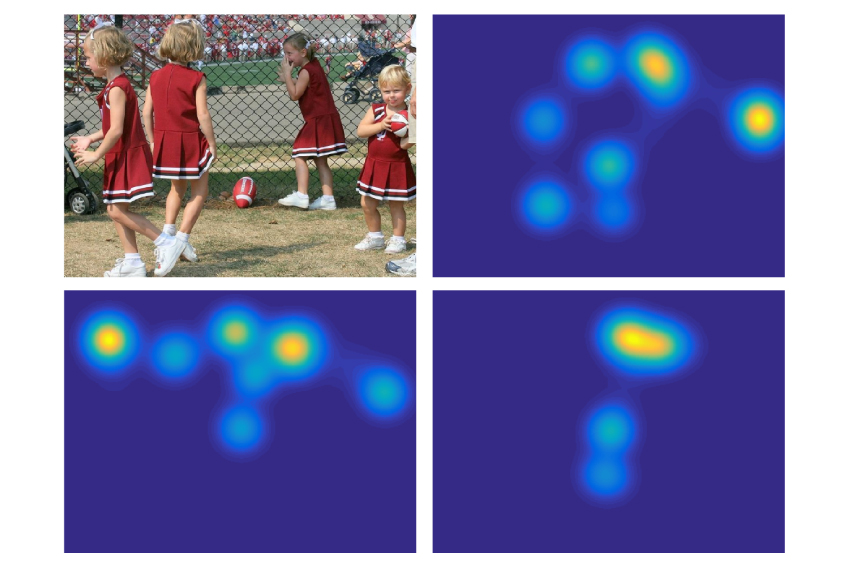
Genetics governs children’s gaze patterns, twin study finds
The way children view both social and nonsocial situations may be determined at least in part by their genes.
The way children view both social and nonsocial situations may be determined at least in part by their genes, a new study of identical and fraternal twins suggests1.
Identical twins tend to look at the same parts of pictures, whether they depict children playing or an object, such as a musical instrument. Fraternal twins also show viewing patterns that are similar, but less so than identical twins. The gaze patterns of unrelated children are even less alike.
The study did not include twins with autism. But the research supports findings published in July that point to a genetic basis for the tendency of children with autism to avoid eye contact2.
“It’s hard to believe,” says Dan Kennedy, assistant professor of psychological and brain sciences at Indiana University in Bloomington, who co-led the work. But “now we have two independent studies in different age groups, using different stimuli, and we see converging evidence.”
The new work, which involved 11-year-olds, also suggests that genes influence eye movements well into childhood. The July study found this pattern in toddlers.
“To take this all the way out to school age is definitely an important confirmation,” says John Constantino, professor of psychiatry and pediatrics at Washington University in St. Louis, who co-led the July study. “Even if the methodology is somewhat different, the principles are overlapping, for sure.”
Gauging gaze:
Kennedy and his colleagues used eye-tracking technology to monitor the gaze of 119 identical and 114 fraternal same-sex twin pairs. The children watched as photographs of social scenes such as children playing, and of objects such as road signs, appeared for three seconds on a screen. The team then created a ‘heat map’ from the eye-tracking data that charts the parts of each photo that caught the children’s attention.
As a group, the children tend to look at similar parts of a photo, such as a bright yellow road sign or the glowing face of a girl blowing out birthday candles, the researchers found. But at an individual level, the children show vast differences in where they look.
The viewing patterns are most similar among identical twins. On a scale of 0 to 1, with 1 indicating exactly the same patterns, identical twin pairs scored an average of 0.6. Fraternal twins are also close, with a score of 0.56, and pairs of unrelated children had an average score of 0.54. Although these numbers seem similar, the differences are statistically significant.
The researchers then divided the three-second viewing patterns into 10 shorter, 300-millisecond snapshots.
In these snapshots, the viewing patterns of identical twins are about 10 to 20 percent more similar than those of two unrelated children. The patterns of fraternal twins fall somewhere in between.
The work appeared 20 November in Current Biology.
Persistent pattern:
This trend holds up for both social and nonsocial photos, suggesting that genetics influences gaze for various types of scenes, Kennedy says.
The complexity of the image — measured by how much the children’s eyes moved across it — doesn’t affect the results, either: Identical twins show the greatest similarity in eye movements across both simple and complex images, and unrelated children the least.
The findings highlight the need to dig deeper into the brain mechanisms that govern gaze in both typical children and those with autism.
“The replication really puts the icing on that cake, and really means that we need to be looking into the biology and cognitive neuroscience of how we pay attention to different visual scenes,” says Helen Tager-Flusberg, director of the developmental science program at Boston University, who was not involved in the work.
The work also underscores that treatments for people with autism should begin early in childhood.
“The idea that this behavior may persist from 24 months to 11 years old might suggest that this behavior becomes exceptionally entrenched and is less vulnerable to interventions,” says Jed Elison, assistant professor of child development at the University of Minnesota, who was not involved in the research.
Kennedy says his next step is to study how individual differences in eye movements relate to differences in behavior and cognition.
References:
Recommended reading

Among brain changes studied in autism, spotlight shifts to subcortex
Home makeover helps rats better express themselves: Q&A with Raven Hickson and Peter Kind
Explore more from The Transmitter

Dispute erupts over universal cortical brain-wave claim
Waves of calcium activity dictate eye structure in flies

